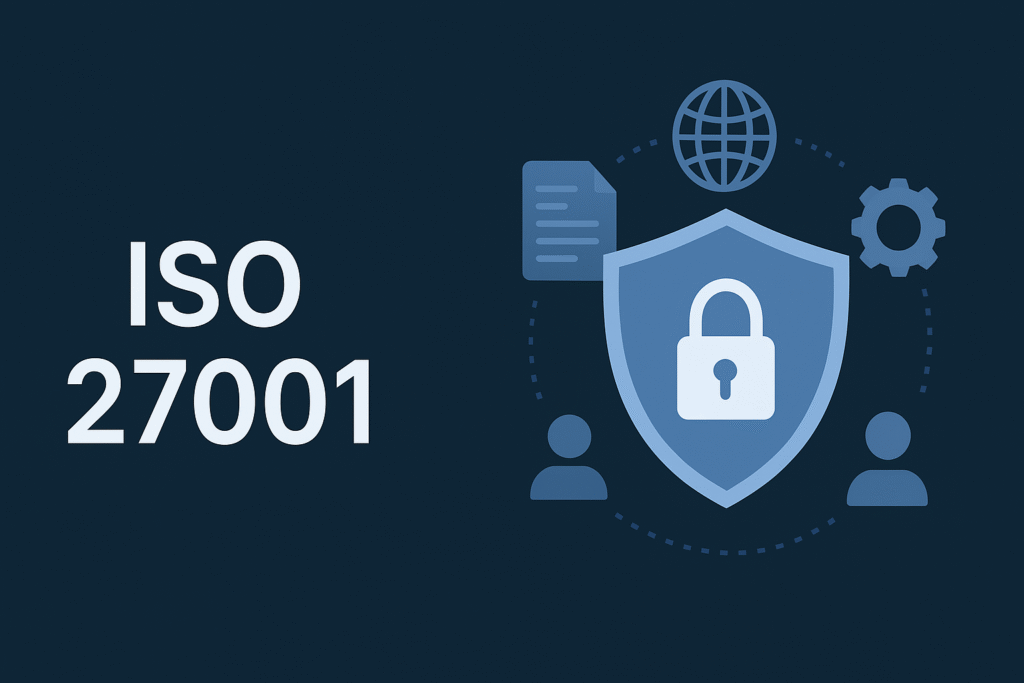ISO 27001 Information Security Management

How ISO 27001 Works
This standard works by establishing an Information Security Management System that integrates policies, procedures, and processes across the organization. Key components include:
1. Risk Assessment: Identify potential security threats to assets such as databases, networks, and applications.
2. Control Implementation: Apply controls defined in Annex A, covering physical, technical, and administrative measures.
3. Monitoring and Review: Regularly assess the effectiveness of implemented controls and update policies as needed.
4. Continuous Improvement: Use a Plan-Do-Check-Act (PDCA) cycle to refine security processes and adapt to evolving risks.
Benefits of ISO 27001
Implementing the standard offers several advantages for organizations:
● Enhanced Security: Protects data from breaches and unauthorized access.
● Regulatory Compliance: Assists in meeting legal requirements like GDPR, HIPAA, or other regional laws.
● Trust and Reputation: Builds stakeholder confidence in your organization’s ability to safeguard information.
● Operational Efficiency: Standardizes processes and reduces vulnerabilities across departments.
● Risk Management: Provides a structured approach to identify, assess, and mitigate information security risks.
Implementation Steps
Organizations aiming to adopt ISO 27001 can follow these step-by-step actions:
1. Define Scope: Determine which parts of the organization will be covered by the ISMS.
2. Conduct Risk Assessment: Identify information assets and potential threats, then evaluate their impact.
3. Develop Policies: Draft security policies, procedures, and control measures.
4. Implement Controls: Apply technical, administrative, and physical controls per the guidelines.
5. Training and Awareness: Educate staff on information security best practices.
6. Internal Audit: Perform regular checks to ensure compliance and effectiveness.
7. Certification Audit: Engage a certified auditor to validate compliance and issue certification.
Limitations
While ISO 27001 provides robust guidance, it also has limitations:
● Resource Intensive: Requires dedicated personnel, time, and financial investment.
● Complex Documentation: Maintaining records and documentation can be burdensome.
● Not a Silver Bullet: Certification does not guarantee complete immunity from cyber threats.
● Continuous Effort: Regular monitoring and updating are essential to remain effective.
Examples
● Financial Institution: A bank implements ISO standard to protect customer banking data, ensuring confidentiality and regulatory compliance.
● Healthcare Provider: A hospital secures patient records by integrating access controls and encryption measures.
● IT Company: A software firm follows ISO standard to secure cloud infrastructure, mitigating potential cybersecurity risks.
Empower Your Team with Secure Practices
ISO 27001 FAQ:
1. What is the ISO 27001 standard?
2. Is ISO legally required?
3. Can small businesses get ISO 27001?
4. What is the limitation about ISO 27001?
5. How much does ISO standard cost?
6. What is mandatory in ISO 27001?
7. Who can issue an ISO 27001 certificate?
8. Does ISO standard require annual audits?
Erin Smith is recognized as one of the most professional writers at Amagicsoft. She has continually honed her writing skills over the past 10 years and helped millions of readers solve their tech problems.



